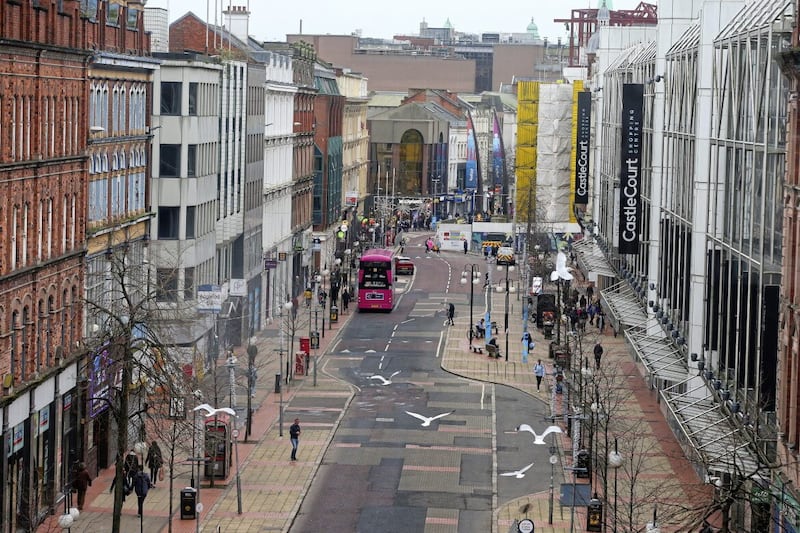IT'S hard to believe we're just a few days away from the third anniversary of the first Covid-19 lockdown. Back in those early days of the pandemic, amidst the mix of fear and uncertainty, we didn’t quite realise what a profound and lasting effect subsequent events would have on many aspects of our society.
Thankfully, the pandemic is becoming a thing of the past, and in spite of a whole host of new and related challenges, life is returning to much like the way it was. During 2020 and 2021, images of an almost empty Belfast city centre became the ‘go to’ for broadcasters and media wanting to show how lockdowns and instructions to ‘work from home where you can’ had upended everyday life. Today, much of that buzz and energy is back.
Belfast has enjoyed a busy period and especially so in the latter part of last year. Northern Ireland Retail Consortium's data covering the four weeks from October 30 to November 26 last showed that Belfast was the only UK city to see an increase in footfall compared to the same period pre-pandemic. In Royal Avenue specifically, footfall went up by nearly 50 per cent in early October boosted, no doubt, by the opening of the new Ulster University campus and the presence of 15,000 very welcome students.
READ MORE: Hybrid working still the norm - but Belfast 'has its buzz back' says survey
What has been evident though is that whilst there are more office-based workers at their desks than there were a year ago, new working patterns have emerged which will, inevitably, impact on the wider Belfast economy.
Belfast Chamber’s 'Return to the Workplace' survey confirms what many of us have suspected for some time. Our study of nearly 400 people shows that working from home all the time is over for the vast majority with hybrid working establishing itself as the ‘new normal’. The average Belfast office-based worker is in their office three days a week with those three days more likely to be Tuesday, Wednesday and Thursday. Both employers and employees are embracing this new way of working with 90 per cent of respondents satisfied with the arrangements their employer has put in place.
This comes as no real shock or surprise. It doesn’t mean the end of the office any more than it heralds the demise of the city centre, but it is clear that this isn’t a temporary phenomenon but rather a more long-lasting change and must be responded to accordingly.
In her book 'The Nowhere Office', Julia Hobsbawm examines in depth the impact that hybrid working is having on work and the workplace. She explores how offices are being reinvented for a range of different purposes and not solely for work and she prescribes a similar remedy for cities themselves suggesting that city centres like Belfast need to be redesigned completely to become “much more mixed-use, residential, artisanal and flexible in its use of space”.
Fortunately for Belfast, that is exactly the sort of shared vision we have developed over recent years. There is a broad consensus in Belfast that we need our city to become a much more people centred place. We want to see Belfast become somewhere that a mix of students, young professionals and families call home. Somewhere that is easy to walk and cycle around, that has more open and green space and where we can make the most of our unique retail, hospitality and cultural offering that is so crucial to attracting and retaining the talent our economy needs. Somewhere that tourists and locals alike want to visit and enjoy. In short, Belfast must become somewhere people want to be, not somewhere people feel they have to be.
Our survey findings should spur us on in that pursuit. It is pretty apparent that the city’s future success will depend on its ability to attract new and different people to use our shops, cafes, bars and restaurants. That will still include office workers but it will also be made up of students, tourists and people from our own city and across the region.
The city is already article addressing this new dynamic with the conversion of the old Debenhams at CastleCourt into a new cinema and leisure complex. Belfast has to speed up its evolution. That must be the abiding lesson flowing from our survey.
Simon Hamilton is chief executive of Belfast Chamber of Commerce









